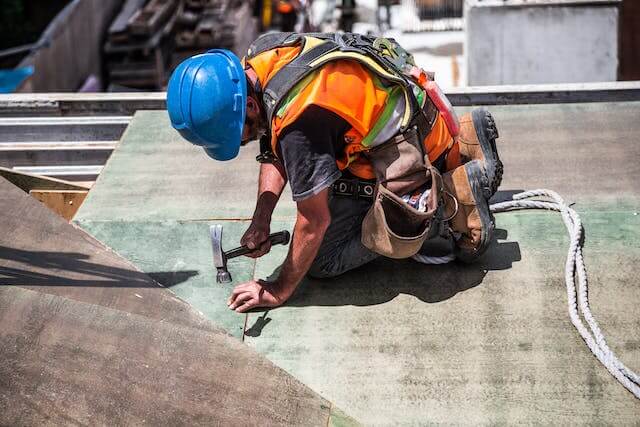
Our safety equipment is great for helping you work safely on a roof. So, we thought we'd put together a guide for you on how to use it!
Risk Assessment for Working on a Roof
Working safely on a roof requires workers to be fully trained by someone competent to do so. Before work on the roof can begin, a competent person must carry out a risk assessment to highlight potential roof work hazards. For more information, the Health and Safety Executive has a detailed guide on how to work on a roof.
During your roof work risk assessment, you should:
- Identify the potential hazards of working on a roof.
- Outline who will be affected by these hazards and how.
- Evaluate the risks & decide on relevant precautionary actions.
- Record the findings in a simple, easy-to-read format.
- Review and update your risk assessment as the roof work is carried out.
All roofs should be considered as fragile until a competent person has confirmed otherwise. Falling through a fragile roof is one of the most common causes of roof work injuries, so a risk assessment is vital.
Read More: Our Working at Height Safety Checklist
Roof Safety Equipment
To work safely on a roof, you must use the appropriate equipment to ensure the safety of you and your workers. Fragile roofs are particularly hazardous, so please think carefully when you’re preparing for the job!
Sloped roofs often require scaffolding to prevent workers or equipment from slipping and falling off the edge. For short-duration jobs on sloped roofs, you might find a secured roof ladder provides suitable access and stability.
Flat roofs are often easier to work on. Instead of scaffolding, you could use a secure guardrail or toe board to prevent falls from the edge.
Once the roof you're working on is safely guarded, you'll need to ensure you and your workers have the right personal protective equipment or PPE to keep everyone safe while working on the roof. This equipment includes:
- Helmet: head protection is vital when working on a roof
- Safety glasses: to prevent debris getting into your eyes
- Gloves: keeping your hands safe from any sharp debris is very important on a roof
- Harness: this should form part of either a fall arrest or fall restraint system, and should have the anchor point on the back, so that the wearer can work without the lanyard getting in the way.
- Fall arrest or fall restraint system - which one you will need depends on how high you're working and what the work involves.
If you have any questions about how to work safely on a roof, or the equipment that you should use, feel free to get in touch!

